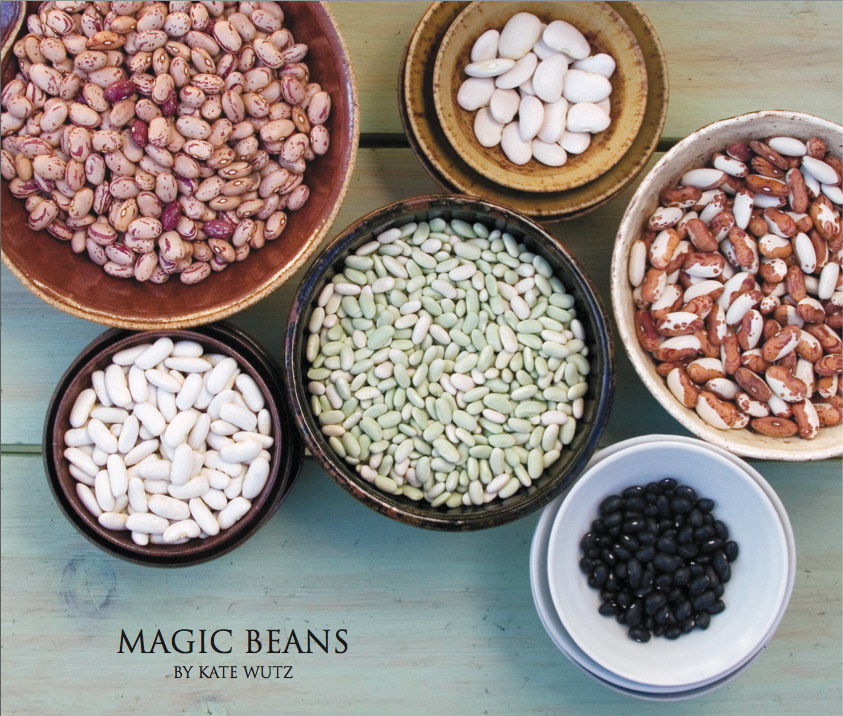Magic Beans
Jim Soran, owner of Zürsun Idaho Heirloom Beans in Twin Falls, is deceptively modest about the scope of his business.
“What we do is simple,” he says. “We take the beans and take the dirt off of them.”
What he actually does is much larger than that. He finds growers—and customers—for 41 varieties of heirloom beans, nine types of lentils, two colors of peas, and over a dozen grains, picking each crop over to ensure every package contains only top-quality beans, then packing them and distributing the products from Twin Falls to nearly 250 outlets across the country. From Alaska to Brooklyn to Dallas, foodies are eating Zürsun Beans.
Soran comes from a bean family. His father started an Idaho bean company called Soranco Bean Products in 1947, just after World War II. “At that time, there were 45 bean warehouses in the Magic Valley,” Soran says. “Now, there are five.”
Soranco focused mainly on pantry beans, such as black beans and pinto beans, as they still do today. They also sold peas and lentils to a woman named Lola Weyman, who, in 1985, had just started an heirloom bean company called Zürsun—named for Zurich, Switzerland, and Sun Valley. According to Soran, Weyman and her husband, John, were “early adopters” of a movement that focused on the quality and taste of food rather than cost or availability. Through her travels to large cities like San Francisco and New York, Weyman learned that there was a real desire for “heirloom” products.
“These strains have been passed from generation to generation,” Soran says. “Some of them are over 200 years old.”
Weyman formed a partnership with Bakker Brothers, a Magic Valley seed company that helped her find and even develop high-quality bean and lentil varieties. Weyman was soon selling beans across the nation, placing her product in stores such as Williams-Sonoma and Dean & Deluca. But when she developed lung cancer in 2004, she sold the business to Soran, who spent four months just learning all of the varieties that Weyman knew by heart.
“I knew pinto beans, and I knew black beans,” he says. “I didn’t know the different kinds. But I had to learn. With a gourmet food, you can spend 45 minutes on the phone talking about just two strains.”
Soran and Weyman both struggled to succeed against what he called a “stigma” against beans.
“The bean got a reputation as a poor man’s food during the Depression,” he says. “Soldiers came back from World War II having eaten in France and Italy and all over Europe, and they brought those new foods back with them. They didn’t want beans. It wasn’t until that stigma went away with the Baby Boomers that people started eating them again.”
“Jim was smart to buy the company,” says sales manager Allison Boomer, who signed on with Zürsun shortly after Soran bought the business in 2004. “It’s taken off like crazy. There’s a whole generation of people now who like to eat, and they’re eating a lot of non-meat foods.”
Boomer says the company ran out of scarlet runner beans last year, a legume with a striking purple and black mottled pattern. The rattlesnake bean, another mottled variety, is particularly popular as well— despite, as Soran points out, its similarity to the common pinto bean.
“You want to feel good about what you’re eating,” he says. “Maybe you don’t want a pinto bean, maybe you want a rattlesnake bean. It sounds much cooler.”
Currently, Soran estimates that about 20 percent of his growers are in the Magic Valley and grow mostly flageolet and cannellini beans. North Idaho growers grow his lentils. His Snowcap, lima, and fava beans are grown in other western states; the black beans in Michigan; and 10 percent of his inventory, like Adzuki beans, are grown overseas, where they’re indigenous.
The company also distributes recipes for many of its legumes, all of which were developed by Boomer to help relaunch the brand in 2006. She cooked each bean by itself, with no seasoning, to determine each bean’s subtle flavor and how best to complement it.
“All the beans have a distinctive flavor,” she says. For example, the Christmas lima bean tastes like roasted chestnuts; the Calypso bean tastes like a baked potato, so Boomer suggested serving it with sour cream and a little bit of chives and bacon.
Boomer’s favorite is the Snowcap, a beautiful ivory- and coffee-colored bean with slight burgundy markings. She suggests cooking “pot beans” with it, simmering the beans with onions, garlic, chili powder, diced tomatoes, and a touch of salt before serving the stew with cornbread. “It’s so easy,” she says “It’s a big, beefy bean that has a great texture.”
Though Boomer is perhaps more passionate than most about beans, she’s in good company. Soran says the company’s customer base is loyal and large, spreading the bean gospel mostly by word of mouth.
“We don’t have to advertise,” he says with a laugh. “If we did, we’d have more customers than product.”





